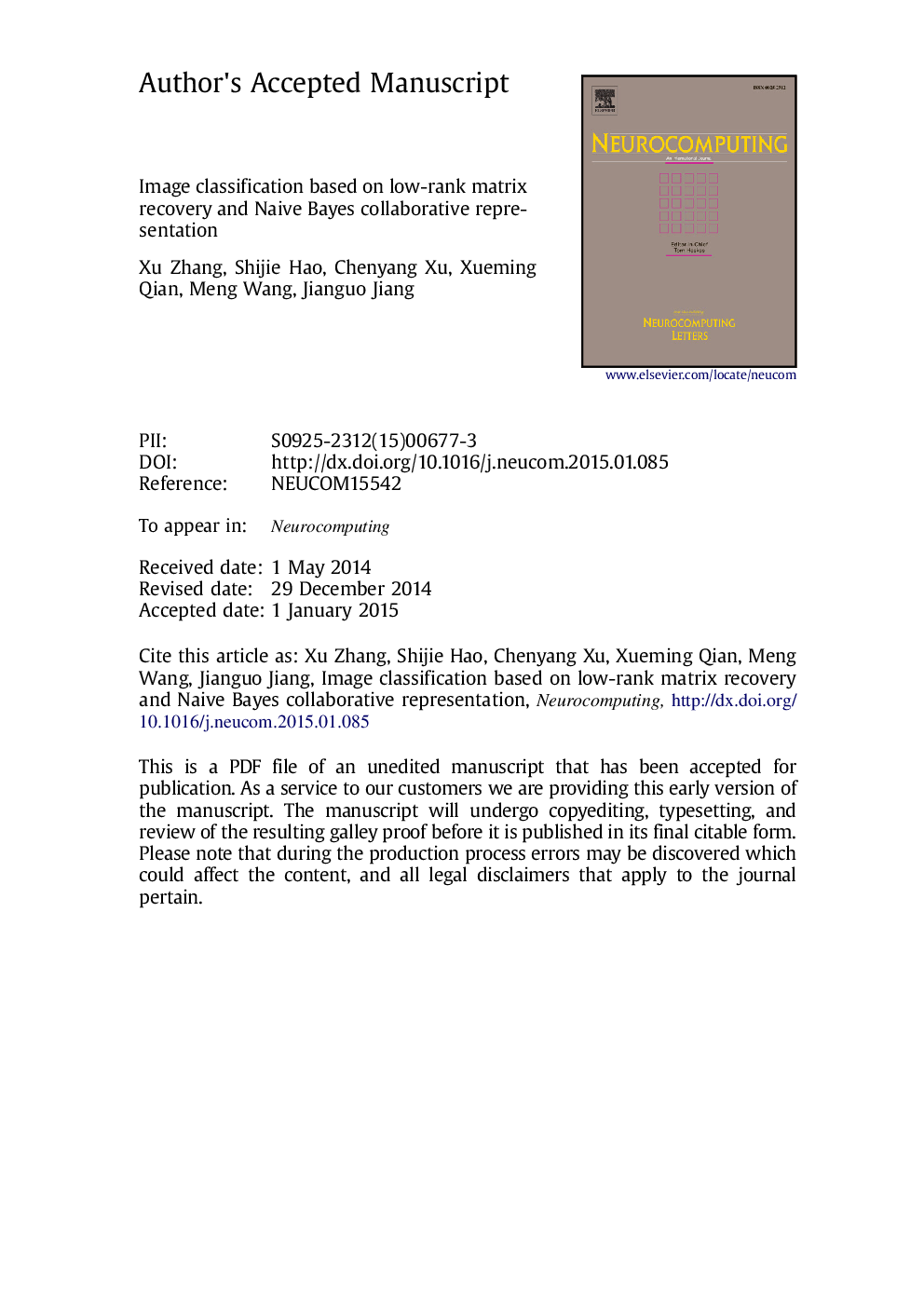| Article ID | Journal | Published Year | Pages | File Type |
|---|---|---|---|---|
| 6865545 | Neurocomputing | 2015 | 22 Pages |
Abstract
Most image classification methods require an expensive learning/training phase to gain high performances. But they frequently encounter problems such as overfitting of parameters and scarcity of training data. In this paper, we present a novel learning-free image classification algorithm under the framework of Naive-Bayes Nearest-Neighbor (NBNN) and collaborative representation, where non-negative sparse coding, low-rank matrix recovery and collaborative representation are jointly employed to obtain more robust and discriminative representation. First, instead of using general sparse coding, non-negative sparse coding combined with max pooling is introduced to further reduce information loss. Second, we use the low-rank matrix recovery technique to decompose the training data of the same class into a discriminative low-rank matrix, in which more structurally correlated information is preserved. As for testing images, a low-rank projection matrix is also learned to remove possible image corruptions. Finally, the classification process is implemented by simply comparing the responses over the different bases. Experimental results on several image datasets demonstrate the effectiveness of our method.
Related Topics
Physical Sciences and Engineering
Computer Science
Artificial Intelligence
Authors
Xu Zhang, Shijie Hao, Chenyang Xu, Xueming Qian, Meng Wang, Jianguo Jiang,
